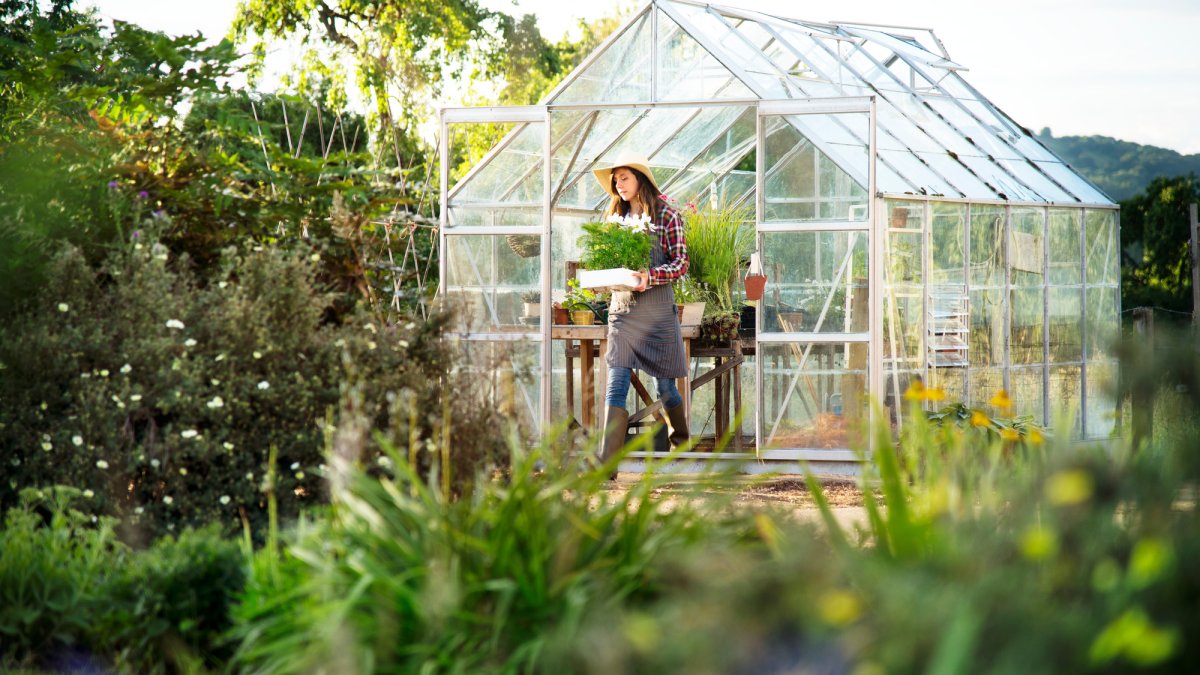
Whether you’re a seasoned horticulturist or a budding enthusiast, a glasshouse can be an invaluable addition to your gardening arsenal. These versatile structures provide a controlled environment where you can nurture your plants year-round, regardless of the weather outside.
But with a wide array of options available, selecting the right glasshouse for your specific needs can seem daunting.
Assess Your Space And Needs
Before exploring various glasshouses for your dream garden oasis, evaluating your available space is crucial. Ask yourself, “How much room do I have?” This will determine the size of the glasshouse you can accommodate.
Also, consider what you plan to grow. Whether it’s delicate orchids or robust vegetables, your choice will influence the type of glasshouse that best suits your needs.
Understand The Different Types Of Glasshouses
Exploring different types of glasshouses is key to finding your perfect match. Here’s a closer look:
- Traditional Glasshouses: These classic structures offer ample space and are versatile enough for various plants, from fruits and vegetables to exotic flowers. Often, they include features like shelving and staging to maximize space.
- Lean-To Glasshouses: Designed to lean against an existing wall, usually on the side of a house, these are ideal for space-saving and offer benefits like easier access to utilities and a microclimate for certain plants. Lean-to greenhouses or glasshouses are perfect for gardeners with limited outdoor space.
- Cold Frames: These are the simplest form of glasshouses, which are essentially low boxes with a transparent lid. They are great for hardening off seedlings or protecting delicate plants during cooler months and are a cost-effective option for extending the growing season.
Understanding these types gives you a solid foundation to choose a glasshouse that fits your gardening needs and space constraints.
Zoning And Legal Considerations
Before making your purchase, it’s important to check local zoning laws and homeowners association rules. Some areas have restrictions on structures like glasshouses. It’s better to be informed than face legal hurdles later.
Furthermore, consider any permits that may be required for construction or installation. Knowing legalities in advance can prevent issues and smooth your glasshouse setup.
Size And Shape Considerations
Size isn’t just about the ground area. Consider the height and shape, too. Taller glasshouses can accommodate climbing plants, while different shapes can affect light distribution. For example, a wider structure might be better for spreading plants, whereas a taller, narrower one could suit vine varieties.
Budget And Longevity
The cost of a glasshouse is a crucial consideration when setting your budget. However, it’s important not to simply opt for the cheapest option. Consider the longevity and quality of the glasshouse.
Sometimes, investing more upfront can save you money in the long run due to lower maintenance costs and greater durability. A well-built glasshouse can withstand harsh weather conditions and provide a longer service life, making it a wiser long-term investment.
Material Matters
The materials used in a glasshouse impact its durability and effectiveness and must be chosen based on specific environmental conditions and the gardener’s requirements. The most common materials include:
- Glass: Classic and aesthetically pleasing, glass provides excellent clarity for light transmission. However, it can be fragile and might not be the best choice in areas prone to severe weather conditions like high winds, heavy snowfall, or hail.
- Polycarbonate: This material is more durable and less likely to break, making it a safer option in regions with harsh weather. Polycarbonate also diffuses light well, which can be beneficial for plant growth. While it may be less visually appealing than glass, its practical advantages in certain climates outweigh this drawback.
When choosing the material for your glasshouse, consider factors such as your local climate, the types of plants you wish to grow, and your aesthetic preferences. For example, in areas with heavy snowfall or a high risk of hail, a polycarbonate glasshouse might be preferable for its durability and resilience, despite its different appearance compared to traditional glass.
Assembly And Installation
Consider whether you’ll assemble the glasshouse yourself or need professional help. Some kits are designed for easy DIY assembly, while others might require more expertise. Therefore, factor in the cost and time of installation when making your decision.
Ease Of Maintenance
You’ll want a glasshouse that’s easy to maintain. Look for features like gutters for rainwater collection and easy-to-clean materials. The less time you spend maintaining, the more time you have for gardening.
If possible, consider glasshouses with modular design, allowing for easy replacement of parts. Seek out models with straightforward instructions for regular upkeep, ensuring your glasshouse remains in top condition with minimal effort.
After-Sales Service And Warranty
Good after-sales service can be invaluable. Inquire about customer service availability for troubleshooting or advice. This ongoing support can be crucial, especially for novice gardeners or those new to glasshouse maintenance. Knowing you have support after purchase provides peace of mind.
Also, check if the manufacturer or retailer offers a warranty, and understand what it covers. A robust warranty protects your investment and reflects the manufacturer’s confidence in their product’s quality and durability.
Conclusion
Selecting the ideal glasshouse should be an exciting and thoughtful journey. By considering these factors, you’re on your way to creating a space where your plants can flourish, and your gardening passion can grow. Remember, the best glasshouse is an investment in your gardening future.
Andres Walsh
Related posts
Stay connected
Today's pick
- The Importance of Professional Handyman Services for Your HomeYour home is your sanctuary, a place of comfort and security, but maintaining it can be a daunting task. From routine maintenance to unexpected repairs, there’s always something that needs attention. While many homeowners might be tempted to tackle these jobs themselves, not all tasks... The post The Importance of Professional Handyman Services for Your […]

